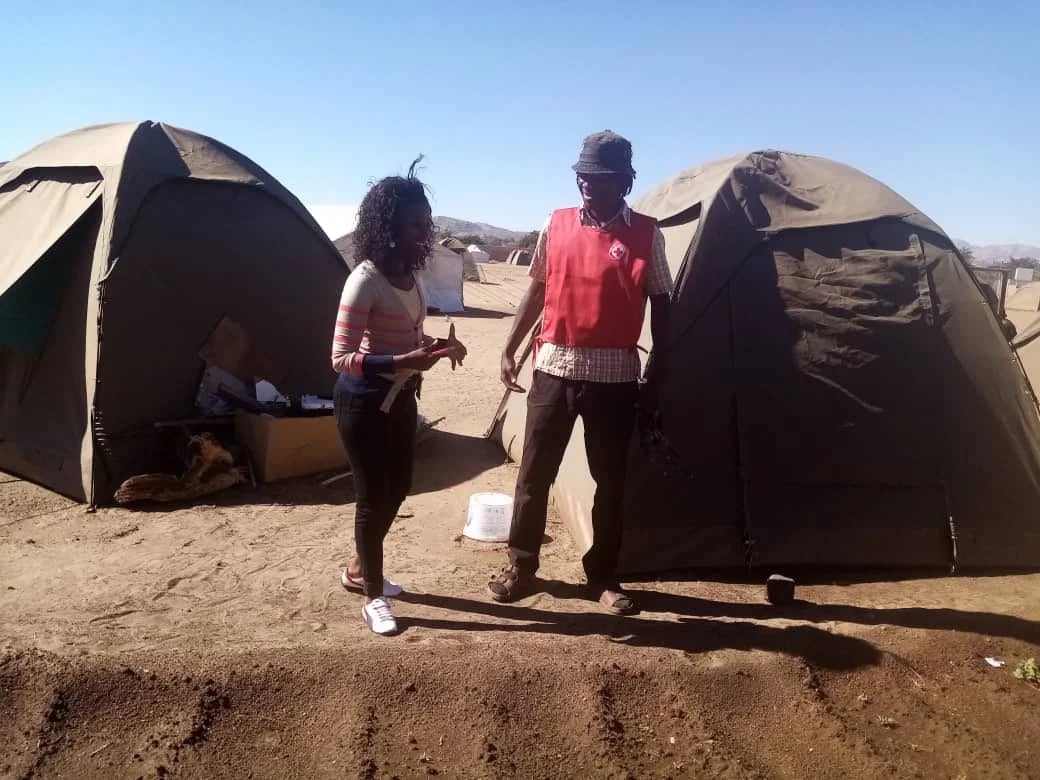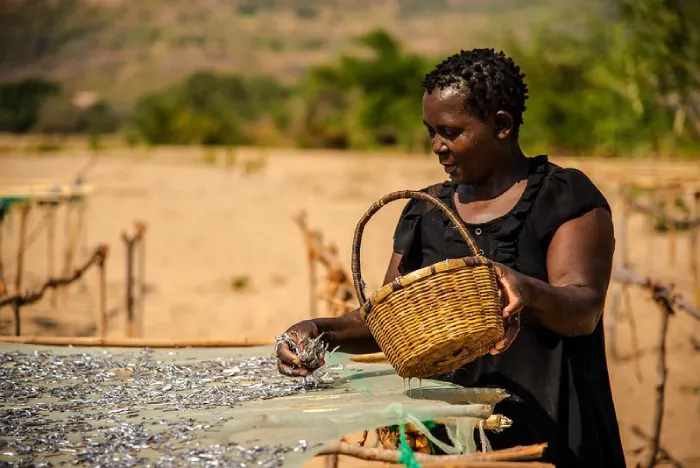Namibia
Namibia
Geographically, Namibia is a medium-sized country, which is not reflective of the country’s population. Namibia is almost seven times the size of Pennsylvania or slightly more than half the size of Alaska. The country is bordered by Angola in the north, Zambia in the northeast, Botswana to the east, and South Africa to the south. Of the 2.6 million inhabitants, most of the population density is on the Angola and Zambia border, as well as in Khomas (the capital Windhoek’s province). Approximately 55% of the population lives in Namibia’s rural regions.
Namibia ranks 129 of 187 countries on the UN Development Program Human Development Index and comparative to nearby countries, has fairly good schooling and literacy rates. HIV/AIDS is prevalent among 12.1% of the adult population. Approximately 25% of Namibia’s female population (aged 15+) has reported having experienced violence from an intimate partner, which suggests there is some level of cultural acceptance of treating women, minimally, with disrespect. Moreover, approximately 28.7% of the population lives below the global poverty line. The country’s primary economic industries are fish processing, mining, dairy products, and meatpacking.
Various ethnic groups occupied southwestern Africa prior to Germany establishing a colony over most of the territory in 1884. South Africa occupied the colony, then known as German South West Africa, in 1915 during World War I and administered it as a mandate until after World War II, when it annexed the territory. In 1966, the Marxist South-West Africa People's Organization (SWAPO) guerrilla group launched a war of independence for the area that became Namibia, but it was not until 1988 that South Africa agreed to end its administration in accordance with a UN peace plan for the entire region. Namibia gained independence in 1990 and has been governed by SWAPO since, though the party has dropped much of its Marxist ideology. President Hage Geingob was elected in 2014 in a landslide victory, replacing Hifikepunye Pohamba who stepped down after serving two terms. SWAPO retained its parliamentary super majority in the 2014 elections. In the 2019 elections, Geingob was reelected but by a substantially reduced majority, and SWAPO narrowly lost its super majority in parliament.
Sources: CIA.gov, undp.org
Sources:
2020
LJI Namibia is launched with two staff members and secures 21 interceptions in its first month, January, followed by 27 in February.
2020
Through the summer and fall, our team on the ground responds to the COVID-19 crisis by finding and feeding more than 100 of those most vulnerable to starvation amid the shutdowns.
2021
The Namibian government has approved our expansion plans to two land border posts in the northern part of the country. The anticipated start date is the beginning of April.

Since its inception in 2020, LJI Namibia has intercepted more than 100 individuals to prevent them from being trafficked.
Meet the Team
Our transit monitors in Namibia are working every day on the front lines to fight human trafficking. Watch to hear more about who they are and why they do what they do.

COVID Relief Work Leads to High-Level Intel
Amid the COVID-19 pandemic, our transit monitors have been providing hunger relief to those facing starvation, but that hasn’t stopped them from continuing to fight trafficking. One of our monitors in Namibia has been working with homeless individuals during the shutdown, providing masks and food. Through her volunteer work, she was able to gather valuable intel on a trafficking ring that she passed on to our investigations team for follow-up.
Stories from LJI Namibia

90 People Returned Home After Team Witnesses Blatant Trafficking in Namibia Marketplace
Our team in Namibia recently began monitoring in a new location, right on the border of a neighboring country. During a tour of a nearby marketplace, they witnessed people being sold into labor for less than a dollar.
-1.webp)
Update from Africa: Our Anti-Trafficking Work Continues
Although movements are restricted in most of the countries where we are currently working due to COVID-19, our transit monitors continue to collaborate with their local authorities to keep watch for high-risk victims of human trafficking.
Human Trafficking in Namibia
Namibia is predominantly a source and destination country for human trafficking for the purposes of labor and sex trafficking. To a much lesser extent, it is also a transit country. The U.S. Department of State ranked Namibia as a Tier 1 country in its efforts to combat trafficking, noting especially the country’s failure to convict any traffickers or to refer any victims of trafficking to aftercare. Children are believed to be trafficked more frequently than adults.
In 2017, the government trained over 1,000 key actors including: law enforcement, immigration, labor officials, social workers, church leaders, journalists, and prosecutors. In 2018, the government partnered with an international NGO on improving investigations to be more victim-centered and equipping "trainers" in all of Namibia’s geographic regions.
Namibia is a very tribal-oriented country, so most of the geographic land is divided by ethnic boundaries. This division has caused certain regions to be more vulnerable to trafficking, both internally and externally, and due to the division, the majority of the country is not concerned with the welfare of states that have different ethnic backgrounds, according to an in-country contact. The southern region has been noted especially by in-country contacts as being discriminated against and thus of a higher vulnerability.
Namibian children are subjected to labor exploitation in domestic service, cattle herding, and in the agriculture industry. In addition, children are exploited in sex tourism and commercial sexual exploitation in Walvis Bay and the capital, Windhoek. Children are trafficked from Namibia’s rural regions to the urban centers, as well as to commercial farms. Children may also be forced to beg in Namibia’s city centers or may be exploited in the fishing industry.
As is common in many of the countries where LJI operates, the most typical recruitment method used by traffickers is a deceptive promise of employment. The former includes labor exploitation in which victims are given legitimate wages to start, but gradually the work becomes increasingly exploitative over time. Traffickers are also believed to seek individuals who have crossed the South Africa or Angola border on foot without the promise of employment. As soon as these vulnerable people cross the border, traffickers approach them, offering them jobs.
Additionally, according to an in-country contact, traffickers will recruit victims through their families with the promise of a better education in a different city or a work opportunity in which the child would be able to send money home.
Sources:
Where We Work
Our core work is currently based in Nepal, India, Bangladesh, South Africa, Malawi, Kenya, Uganda, Sierra Leone, Rwanda, Namibia, Mozambique, Lesotho, Liberia, Zambia, Burkina Faso, Indonesia, and Ethiopia.
- Where we're on the ground
-1.png)



